Hazard Communication Standard Final Rule
New changes to the Occupational Safety and Health Administration’s (OSHA) Hazard Communication Standard are bringing the United States into alignment with the Globally Harmonized System of Classification and Labeling of Chemicals (GHS), further improving safety and health protections for America’s workers. Building on the success of OSHA’s current Hazard Communication Standard, the GHS is expected to prevent injuries and illnesses, save lives and improve trade conditions for chemical manufacturers. The Hazard Communication Standard in 1983 gave the workers the ‘right to know,’ but the new Globally Harmonized System gives workers the ‘right to understand.’
The new hazard communication standard still requires chemical manufacturers and importers to evaluate the chemicals they produce or import and provide hazard information to employers and workers by putting labels on containers and preparing safety data sheets. However, the old standard allowed chemical manufacturers and importers to convey hazard information on labels and material safety data sheets in whatever format they chose. The modified standard provides a single set of harmonized criteria for classifying chemicals according to their health and physical hazards and specifies hazard communication elements for labeling and safety data sheets.
Benefits: The new standard covers over 43 million workers who produce or handle hazardous chemicals in more than five million workplaces across the country. The modification is expected to prevent over 500 workplace injuries and illnesses and 43 fatalities annually. Once fully implemented it will also:
- Improve the quality and consistency of hazard information in the workplace, making it safer for workers to do their jobs and easier for employers to stay competitive;
- Enhance worker comprehension of hazards, especially for low and limited-literacy workers, reduce confusion in the workplace, facilitate safety training, and result in safer handling and use of chemicals;
- Provide workers quicker and more efficient access to information on the safety data sheets;
- Result in cost savings to American businesses of more than $475 million in productivity improvements, fewer safety data sheet and label updates, and simpler new hazard communication training: and
- Reduce trade barriers by harmonizing with systems around the world.
Rulemaking background: OSHA published a Notice of Proposed Rulemaking to update the Hazard Communication Standard in September 2009 and held public hearings in March 2010.
Major changes to the Hazard Communication Standard:
- Hazard classification: Chemical manufacturers and importers are required to determine the hazards of the chemicals they produce or import. Hazard classification under the new, updated standard provides specific criteria to address health and physical hazards as well as classification of chemical mixtures.
- Labels: Chemical manufacturers and importers must provide a label that includes a signal word, pictogram, hazard statement, and precautionary statement for each hazard class and category.
- Safety Data Sheets: The new format requires 16 specific sections, ensuring consistency in the presentation of important protection information.
- Information and training: To facilitate understanding of the new system, the new standard requires that workers be trained by December 1, 2013 on the new label elements and safety data sheet format, in addition to the current training requirements.
Changes from the Proposed to the Final Rule: OSHA reviewed the record and revised the Final Rule in response to the comments submitted. Major changes include:
- Maintaining the disclosure of exposure limits (Threshold Limit Values ) established by the American Conference of Governmental Industrial
- Hygienists (ACGIH) and carcinogen status from nationally and internationally recognized lists of carcinogens on the safety data sheets;
- Clarification that the borders of pictograms must be red on the label;
- Flexibility regarding the required precautionary and hazard statements to allow label preparers to consolidate and/or eliminate inappropriate or redundant statements; and
- Longer deadlines for full implementation of the standard (see the chart below):
What you need to do and when:
- Chemical users: Continue to update safety data sheets when new ones become available, provide training on the new label elements and update hazard communication programs if new hazards are identified.
- Chemical Producers: Review hazard information for all chemicals produced or imported, classify chemicals according to the new classification criteria, and update labels and safety data sheets.
| Effective Completion Date | Requirement(s) | Who |
|---|---|---|
| December 1, 2013 | Train employees on the new label elements and SDS format. | Employers |
| June 1, 2015*
December 1, 2015 |
Comply with all modified provisions of this final rule, except:
Distributors may ship products labeled by manufacturers under the old system until December 1, 2015. |
Chemical manufacturers, importers, distributors and employers |
| June 1, 2016 | Update alternative workplace labeling and hazard communication program as necessary, and provide additional employee training for newly identified physical or health hazards. | Employers |
| Transition Period | Comply with either 29 CFR 1910.1200 (this final standard), or the current standard, or both. | All chemical manufacturers, importers, distributors and employers |
* This date coincides with the European Union implementation date for the classification of mixtures.
HazCom Quiz
